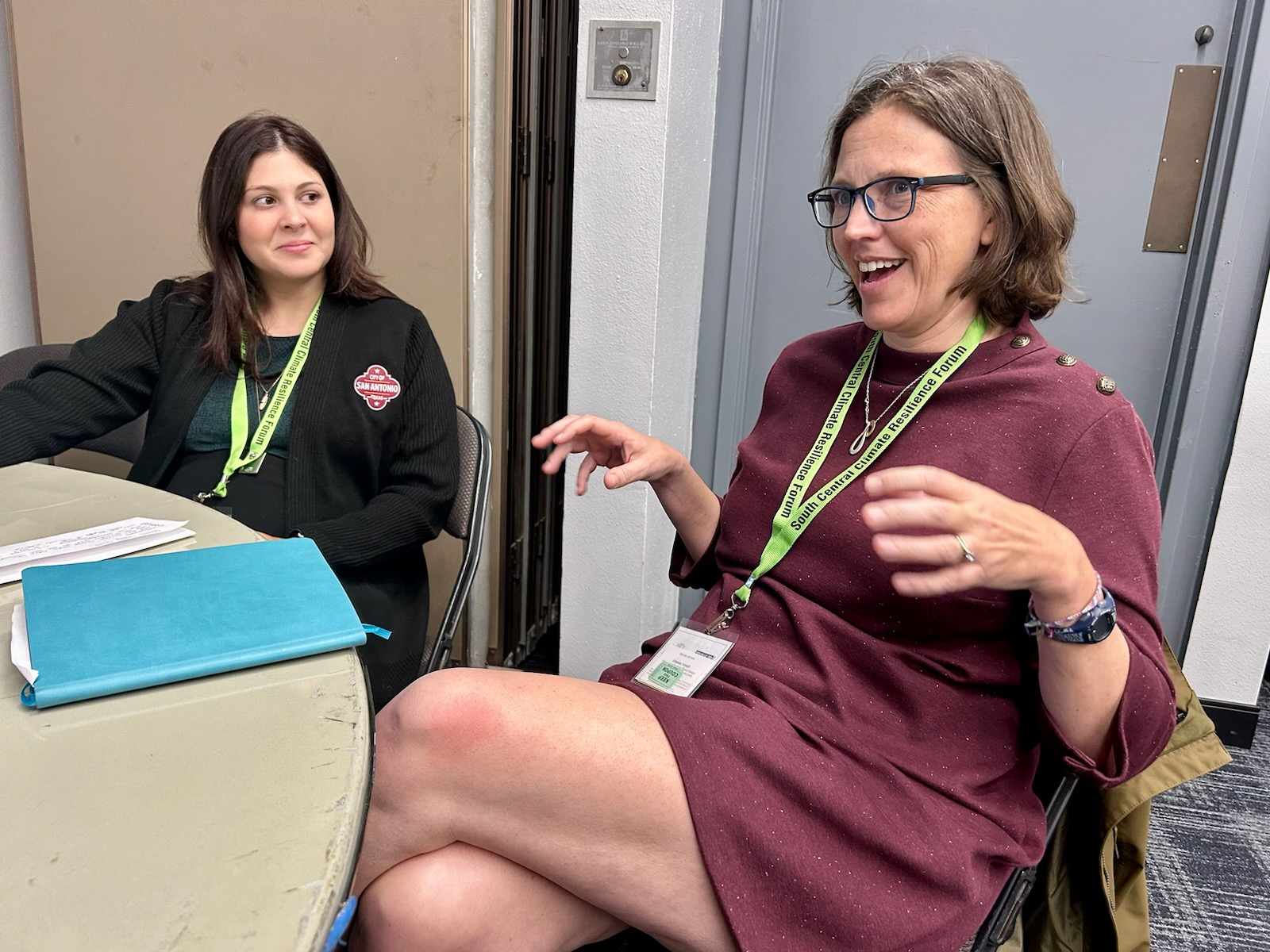
When you are working on something as challenging as climate change advocacy, it is important to find things to give you hope. That was the message Katharine Hayhoe gave us as the keynote speaker of the South Central Climate Resilience Forum, a gathering of scientists, city government officials, engineers, and planners held in Dallas, Texas April 2-4.
For city governments, planning for climate change mitigation, adaptation, and resilience are opportunities for local communities to improve quality of life for residents in a variety of ways. Many long standing issues can be addressed at the same time climate resilience plans are being made.
For example, improving transportation infrastructure, especially to include transit options like buses, light rail, bicycle infrastructure, and walking paths improves mobility for non-drivers, gives everyone more options and flexibility, lessens gridlock on highways, improves air quality, and lowers the emission of greenhouse gases.
Urban agriculture lowers food costs, reduces the distance food must be driven to reach markets, improves access to fresh foods in low-income communities, improves local air quality and heat island effects, and creates an opportunity for communities to gather.
Several cities in Texas have already begun to implement programs like these. Dallas’s Comprehensive Environmental and Climate Action Plan (CECAP) sought input from community leaders across all departments and designed sensible programs that would address as many needs as possible. The plan is already being implemented in Dallas and is seen as a success nationwide.
Austin, Houston, San Antonio, and El Paso have climate plans of their own. Many of their staff were in attendance at the Dallas meeting.
Now is a great time for cities to roll out climate resilience initiatives, in part because there is significant federal funding available to support it. Dr. Earthea Nance, Administrator for the Environmental Protection Agency’s Region 6, reported that between the Inflation Reduction Act and Bipartisan Infrastructure Bill along with other programs, the EPA has funded $1.48 billion for projects like clean buses and improvements to drinking water systems, solar and renewable energy projects, clean ports initiatives, and more.
Dr. Nance also mentioned technical assistant grants, available from the EPA to communities interested in improving climate resilience but needing additional expertise to design projects that will be most effective.
Arthur Johnson, Chief Executive Director, Lower 9th Ward Center for Sustainable Engagement and Development described climate resilience work going on in South Louisiana, noting that the issues facing his region are quality of life issues, rather than only climate issues. By thinking about issues broadly, it is easier to build a broad coalition of people who want to work for improvements.
A session on the state of climate science was also insightful. I heard from former Louisiana State Climatologist Barry Keim who talked about hurricane season beginning earlier in the year as a result of climate change. Derek Thompson from the Southern Climate Impacts Planning Program (SCIPP), a NOAA program, talked about the way temperature changes throughout the year disrupt ecosystems. Changes like increasing overnight lows, fewer cold days, and warmer nights mean tropical species are able to migrate further north than before. Growing seasons for agricultural plants and backyard gardens have also changed significantly over the past forty years.
Wrapping up the science session was Elinor Martin, who shared her research about the climatology of what she terms “weather whiplash” events. These are events where very dry weather is followed by periods of very wet weather or vice versa. These are important because this kind of back and forth contributes to worsening wildfire conditions. That’s because vegetation grows rapidly during very wet conditions, then dries out, making regions more prone to fire. These weather whiplash events are more likely to occur in a warmer climate.
As much as I loved the science session, for me the biggest takeaway from the conference was that there are dozens of committed people working in city government who are thinking creatively about how to address climate change, both from the perspective of improving resilience for their communities and also from the perspective of mitigation.
The things we need to do to prepare for climate change and to mitigate climate change improve quality of life in many ways. Things like lower energy costs, improved air quality, and less traffic seem like goals all of us can get behind.
Another takeaway was the critical role of local government in implementing our climate goals. With so much focus on the UN Climate Negotiations at the international level, we risk losing sight of the local governments who must implement the policies that make real progress in meeting those goals. It is a theme Texas Impact staff heard on several occasions during COP28 in Dubai.
The even better news for all of us interested in climate mitigation and resilience is that city government is one way it is easy to get involved and make a real difference in our communities.
So if I were to look for something that gives me hope in the midst of the challenging work of climate advocacy, I would have to say it was getting to know the sustainability staff at the Cities of Austin, Houston, and San Antonio and all the other committed government workers, administrators, and scientists all working on different pieces of the climate resilience puzzle.
As Katharine Hayhoe said in her keynote, “Cities in Texas are a great example of what can be done even without support from the state government.”

